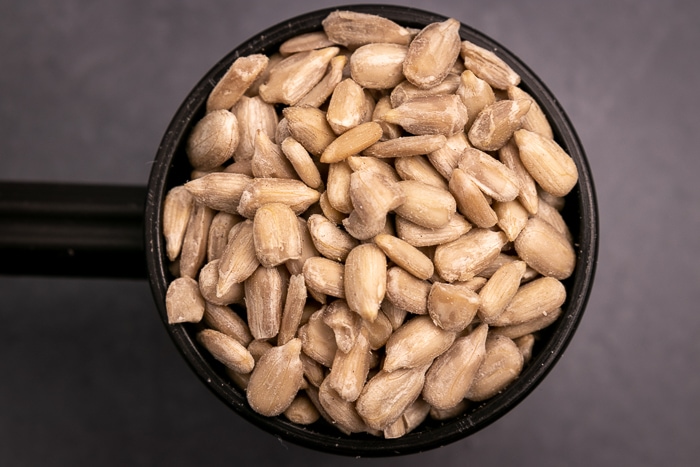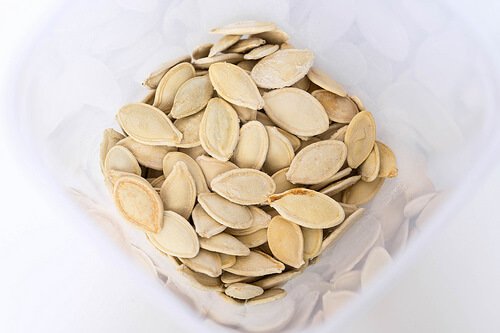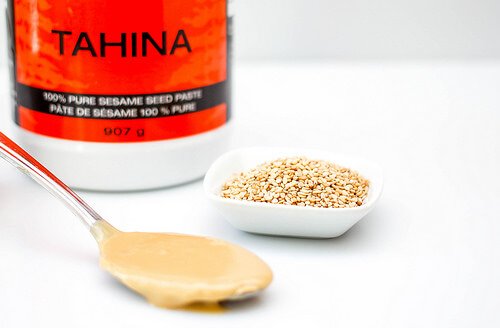Does Margarine Go Bad?
Here’s all you need to know about margarine. Learn if margarine ever goes bad, how long it lasts, and if you need to refrigerate it.
There’s this out-of-date stick of margarine in your fridge, and you’re not sure if you can still use it or not. Does margarine even go bad?
Or maybe your margarine has turned yellow, and you want to know if you should discard it or not.
Sounds familiar?
If so, this article is for you. Let’s jump right in.
The information below applies to pretty much all buttery spreads and products labeled as vegetable oil spread (like Country Crock) available. In fact, many brands never use the word “margarine” on their website. That’s probably because it makes people think of preservatives and stabilizers.

Does Margarine Go Bad?
Margarine keeps for only a couple of months, and like all other fat-based products, goes rancid if it’s exposed to moisture, heat, or oxygen for too long. So while it’s unlikely that it’ll grow mold, sooner or later its quality will decline to the point that it’s no longer good enough to use.
Of course, proper storage practices (more on those later) help buttery spreads retain quality for longer, but they certainly don’t last forever. At some point, they will both look bad and smell funky, and those are sure signs it’s time to open another container.
While many of us associate margarine with preservatives and nearly infinite shelf life, those times are long gone. Nowadays, more and more brands offer butter alternatives with short and fairly clean ingredients lists. And that means the storage time is limited too.
Obviously, the time it takes until your margarine goes bad depends on its ingredients.
A product containing many preservatives and stabilizers will last months past its date without noticeable quality loss. On the other hand, an all-natural one will probably stay good for an extra couple of weeks at best.
So instead of analyzing the ingredients list one by one to figure out how long yours should last, it’s easier to give the spread a quick exam to learn if it’s still any good or not.
Signs of Spoilage
Your margarine is most likely spoiled if:
- It gives off an off, paint-like or chemical smell. That smell is the sign that your buttery spread has turned rancid. While eating rancid margarine won’t necessarily make you sick, it’s definitely not advisable. Plus, it stinks and tastes bad, which is enough reason to throw it out.
- Margarine turns yellow. The surface becoming darker is a classic sign of oxidation, and you’ve probably seen the same happen to butter. If the layer of yellowness is paper-thick, you can scrape it off, but if it’s much thicker, it’s better to get rid of the container or tub.
- It’s moldy. While mold isn’t a typical sign of spoilage for fats, you know that margarine is no good if you notice any.
- Soapy taste. If the spread looks and smells okay, it’s time for a flavor taste. If the flavor reminds you of soap or old paint, that margarine is rancid. Get rid of it.
- Off taste or texture. Besides the above, if the taste or texture of your margarine isn’t up to par, it’s time for it to go.
Last but not least, if your margarine sits in the fridge for way longer than it should, toss it. While it might still be okay to eat, it’s better to err on the side of caution.
Now, let’s talk about how long is “way longer than it should,” precisely.

How Long Does Margarine Last?
| Fridge | |
|---|---|
| Margarine (unopened or opened) | Sell-by + 1 month |
Margarine lasts a couple of months and typically keeps for at least 2 to 3 extra weeks past the date printed on the label. That’s true no matter when you open the container.
Of course, the sooner you open it, the worse its quality will be when it’s nearing its date, but most margarines should be fine at least up until their date.
Like Crisco, the date printed on the margarine stick is more important than how long it’s open.
Want to learn more about Crisco? Read my article on how long does Crisco last.
When it comes to the exact shelf life, it depends on the brand and the ingredients used. And while it usually is between two and four months, you might find some outliers.
In case you’re interested in details, the storage period is affected by (among other things):
- amount of preservatives (like extra antioxidants) and emulsifiers added
- what vegetable fats are used to make the spread, and
- the ratio of polyunsaturated fats to saturated fats (the latter are much more stable than the former, hence a longer shelf life)
Now, let’s say your margarine is almost a month past its date. Should you toss it right away?
Not necessarily. Let’s talk about out-of-date margarine.

Expired Margarine
While most margarines should retain decent quality for at least a couple of weeks past the printed date, some of them might keep for much longer.
If you’re wondering if yours is among the lucky ones, find the production and best-by dates on the label and figure out what’s the recommended storage time.
If it’s around two months, it probably won’t be all that great a month past its date. But if it comes with a shelf life of 5 months, chances are its quality should be quite alright after an extra month.
The bottom line is that as long as you’re comfortable with the best-by date on the label, you can use the spread. That is assuming that it doesn’t show any signs of spoilage that I described earlier, of course.
Now that we covered expiration and shelf life, it’s time to tackle storage practices.

Does Margarine Need to be Refrigerated?
While margarine stays safe at room temperature, its quality degrades much faster, and within a couple of days, it might start to separate. Because of that, refrigeration is the way to go, and most brands recommend it.
In fact, if I noticed that the producer suggested leaving the spread on the counter, I’d get suspicious. That’s because it quite possibly means the product is loaded with preservatives and emulsifiers that make sure the fat retains quality while on the counter.
(Margarine isn’t lard, which keeps quite well without refrigeration.)
Of course, how quickly margarine degrades if not refrigerated depends on the brand and ingredients used. The more natural the product, the quicker its quality will decline.
Can You Leave Margarine Out?
If you don’t want to compromise its quality, you can leave margarine out only for up to a couple of hours, maybe overnight.
Some brands give specific recommendations. For instance, Smart Balance says you can leave their spreads on the counter for up to 5 hours. But you probably don’t need exact numbers to know how to proceed here.
In short, you can’t leave margarine or buttery spreads on the counter for long without facing the consequences.
Can You Freeze Margarine?
Most margarine and buttery spreads freeze perfectly well, just like butter does.
The exception here are spreads labeled as “light” or “fat-reduced.” Those contain less fat than regular margarine or butter, which means freezing them might affect their texture more.
In other words, you might not necessarily be pleased with what you get after defrosting it.
Because of that, if you’re thinking about freezing your “light” buttery spread, I suggest a test run, in which you freeze a small amount to see how it goes.
When it comes to the freezing process, it’s as simple as it gets. You place the margarine stick in a freezer bag (for some extra protection), squeeze out the air, seal the bag, and put it in the freezer.
If you want, you can divide the stick into a few smaller pieces and wrap them individually. This way, you don’t need to defrost the entire thing.
For best quality, defrost and use the frozen margarine within 6 months of freezing. Of course, the vegetable spread will stay safe to eat indefinitely, but the longer it’s frozen, the worse quality you should expect.
Rotten Records: Share Your Snap!
Caught some food past its prime? Upload your photo to “Rotten Records” and help others spot the signs of spoilage. Every image makes our food community safer and more informed!




![Does Coconut Oil Go Bad? [Shelf Life and Expiration]](https://www.doesitgobad.com/wp-content/uploads/Coconut-oil-jar-in-hand-768x512.jpg)
